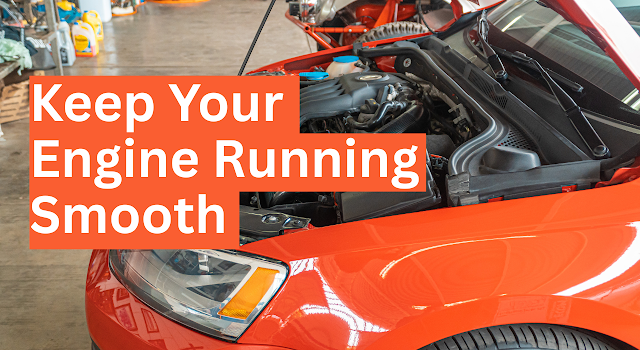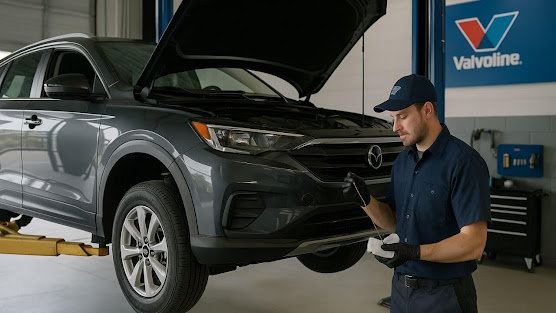How to Keep Your Engine Running Smoothly and Avoid Costly Repairs?
An engine that runs smoothly is the foundation of reliable vehicle performance. When maintained correctly, it delivers better mileage, quicker starts, stronger acceleration, and fewer unexpected breakdowns. But without proper care, even the most advanced engine can develop problems that lead to expensive repairs.
Engine maintenance isn’t complicated, but it does require consistency and awareness. With a few smart habits and regular checks, it’s possible to significantly extend engine life and keep the vehicle operating at its best.
Regular Oil Changes Are Non-Negotiable
Engine oil performs several critical functions. It lubricates internal parts, reduces friction, manages heat, and helps clean out contaminants. Over time, oil breaks down and collects debris, becoming less effective. If it’s not changed at the right interval, it can no longer protect the engine the way it should.
Following the oil change schedule listed in the owner’s manual is the first step. Most modern vehicles need oil changes between 5,000 and 7,500 miles, though some synthetic oils extend that range. Skipping or delaying oil changes increases internal wear and can lead to serious engine damage.
For those looking to save time, take 5 oil change cost today is often considered because of its quick service option that doesn't require appointments, which makes it easy to stay on top of maintenance without much disruption.
Keeping an Eye on Fluid Levels Matters
An engine doesn't rely on oil alone. Coolant, transmission fluid, brake fluid, and power steering fluid all play essential roles in smooth operation. Each of these must be at the correct level and in good condition.
Coolant helps regulate temperature. Transmission fluid allows gear shifts to be smooth and responsive. Brake and steering fluids are essential for safe control. Monitoring these regularly can prevent overheating, system failure, and costly replacements.
Fluid checks should be done monthly. If any appear dark, gritty, or smell burnt, they should be changed. Catching fluid problems early can prevent larger issues that often involve engine strain or damage.
Air Filter Replacements Keep Engines Efficient
Engines need oxygen to burn fuel efficiently. A clogged or dirty air filter restricts airflow, causing a drop in performance and fuel economy. It can also lead to a richer air-fuel mixture, increasing deposits inside the engine over time.
Replacing the air filter every 12,000 to 15,000 miles is a good baseline, though conditions like dusty roads or high-traffic urban areas may require more frequent changes. This low-cost part supports both performance and long-term engine health.
Warning Lights Should Never Be Ignored
The check engine light is often misunderstood or overlooked. But it's a direct line of communication from the engine’s control system to indicate something is wrong. In many cases, early detection through this light can save time and money.
It may point to something as simple as a loose fuel cap, but it could also indicate sensor failure, misfires, or catalytic converter issues. Using an OBD2 scanner or getting a diagnostic check is the most reliable way to know what's behind the alert.
Ignoring it could allow small issues to grow into serious mechanical problems. Taking it seriously helps avoid those expensive repair bills that come from prolonged engine strain.
Cold Starts Need Special Attention
When temperatures drop, oil thickens and takes longer to circulate. This makes engine parts more vulnerable to wear during the first few minutes after starting. Letting the engine idle for a short time — typically 30 seconds to 1 minute, gives the oil time to reach all areas.
Long idling isn't necessary and may even waste fuel, but giving the engine a brief moment to warm up helps protect internal components during colder months.
Smooth Driving Equals Long Engine Life
Aggressive acceleration, constant hard braking, and sudden throttle inputs all take a toll on the engine and its related systems. High RPMs and rapid gear changes put extra stress on parts that are designed for steady, predictable operation.
Maintaining smooth throttle control and avoiding unnecessary strain helps reduce wear. It also promotes better fuel efficiency and minimizes the risk of overheating or failure under load.
Over time, this driving style contributes to a more durable and efficient engine.
Use of Quality Fuel and OEM-Grade Parts
Fuel quality has a direct impact on engine performance. Lower-grade or contaminated fuel can result in knocking, misfires, and carbon buildup. Always using fuel with the octane rating recommended by the manufacturer protects the engine from damage.
The same goes for replacement parts. Spark plugs, gaskets, and sensors should meet OEM standards. While cheaper alternatives are available, they often lack the reliability or lifespan needed for engine-critical applications.
Choosing trusted parts may cost more up front but prevents repeated repairs and ensures long-term consistency.
Conclusion
An engine that runs smoothly isn't a matter of luck. It's the result of disciplined maintenance and attention to detail. From timely oil changes and fluid checks to driving habits and fuel choices, every small step plays a part.
Following a clear plan, staying proactive with inspections, and responding early to signs of trouble are the most effective ways to reduce risk and save money on future repairs. Engine longevity is achievable through habits that focus on prevention rather than cure.
With consistent care, any well-built engine can deliver strong, dependable performance for many years.





Comments
Post a Comment